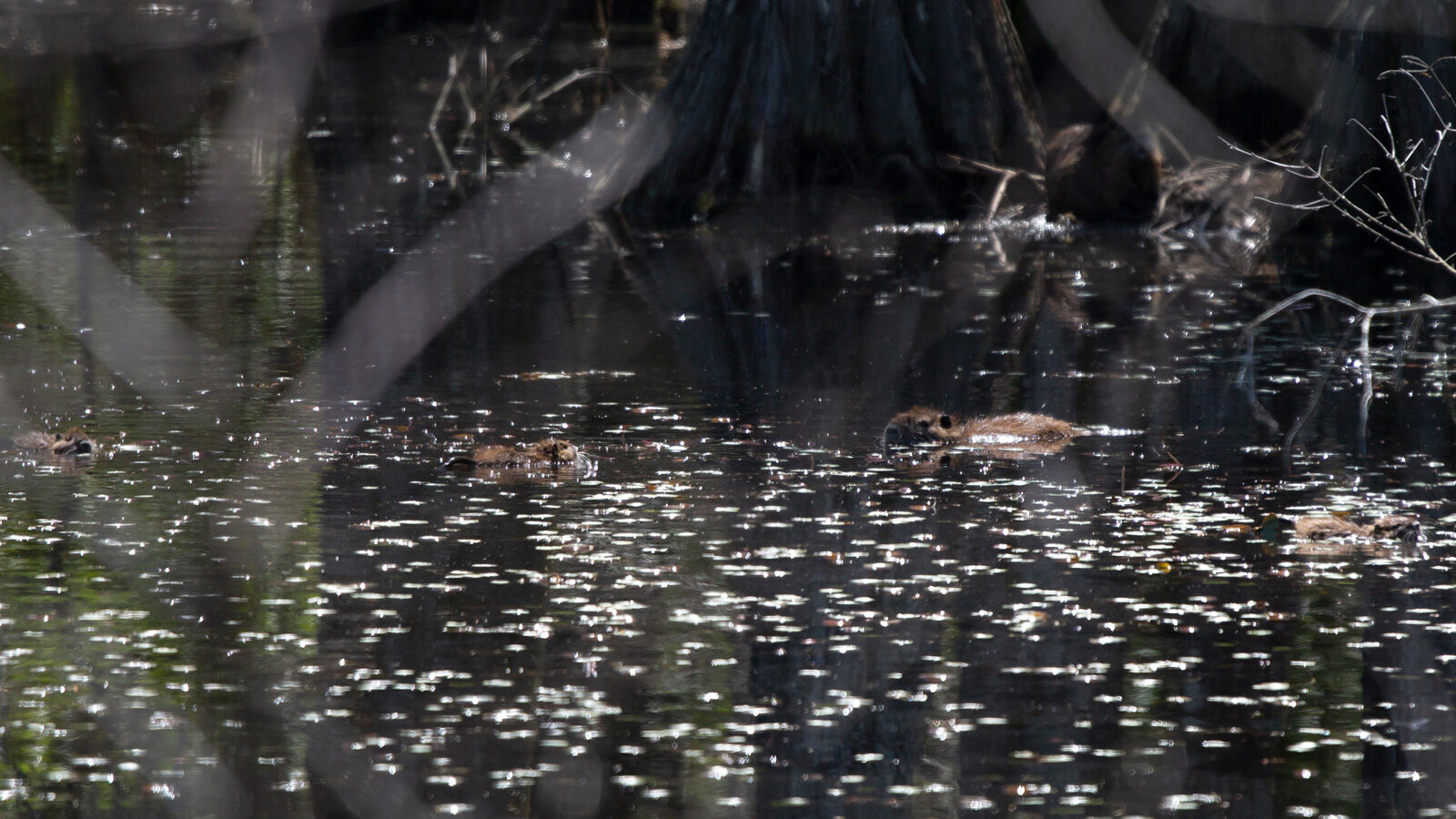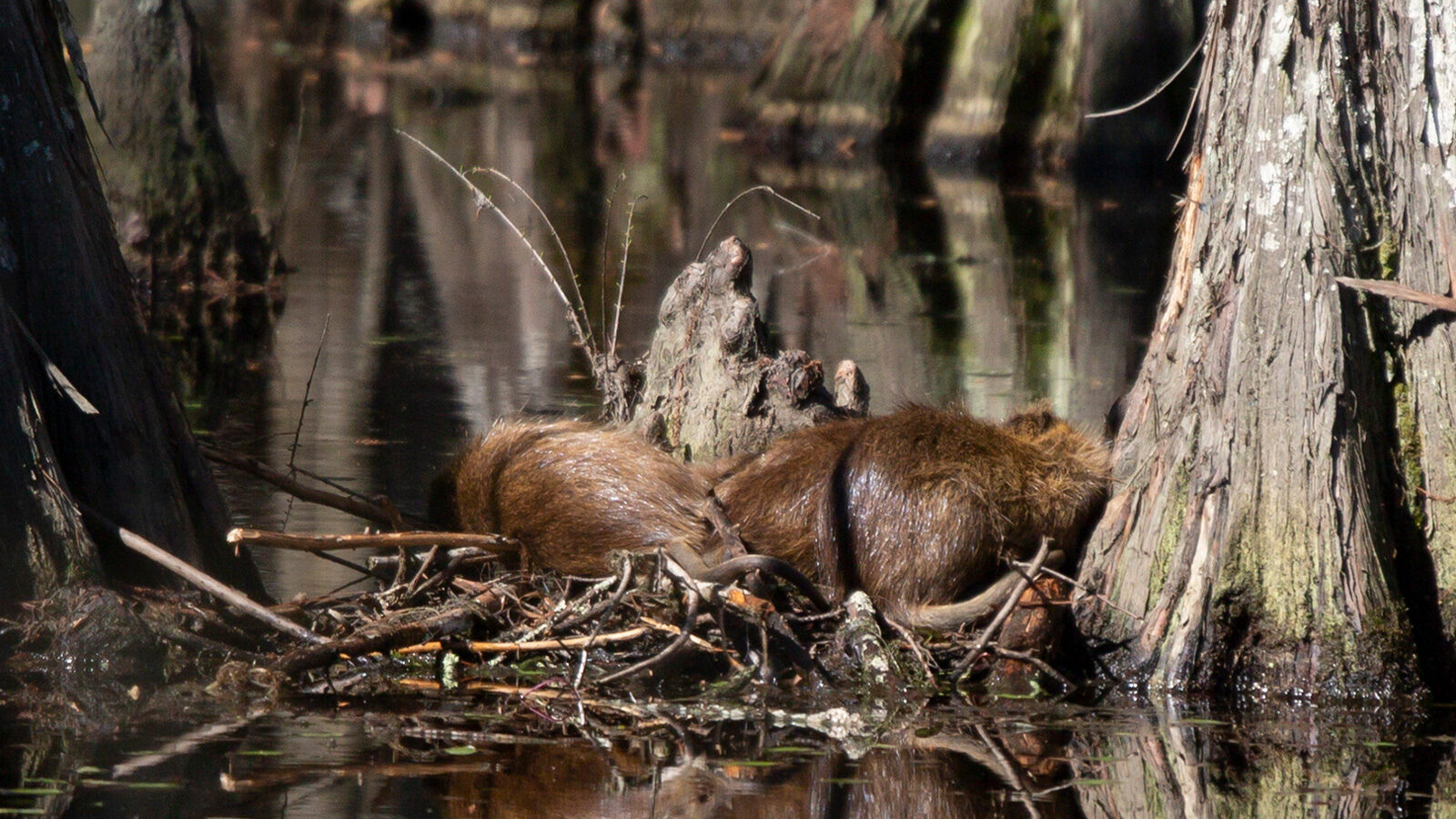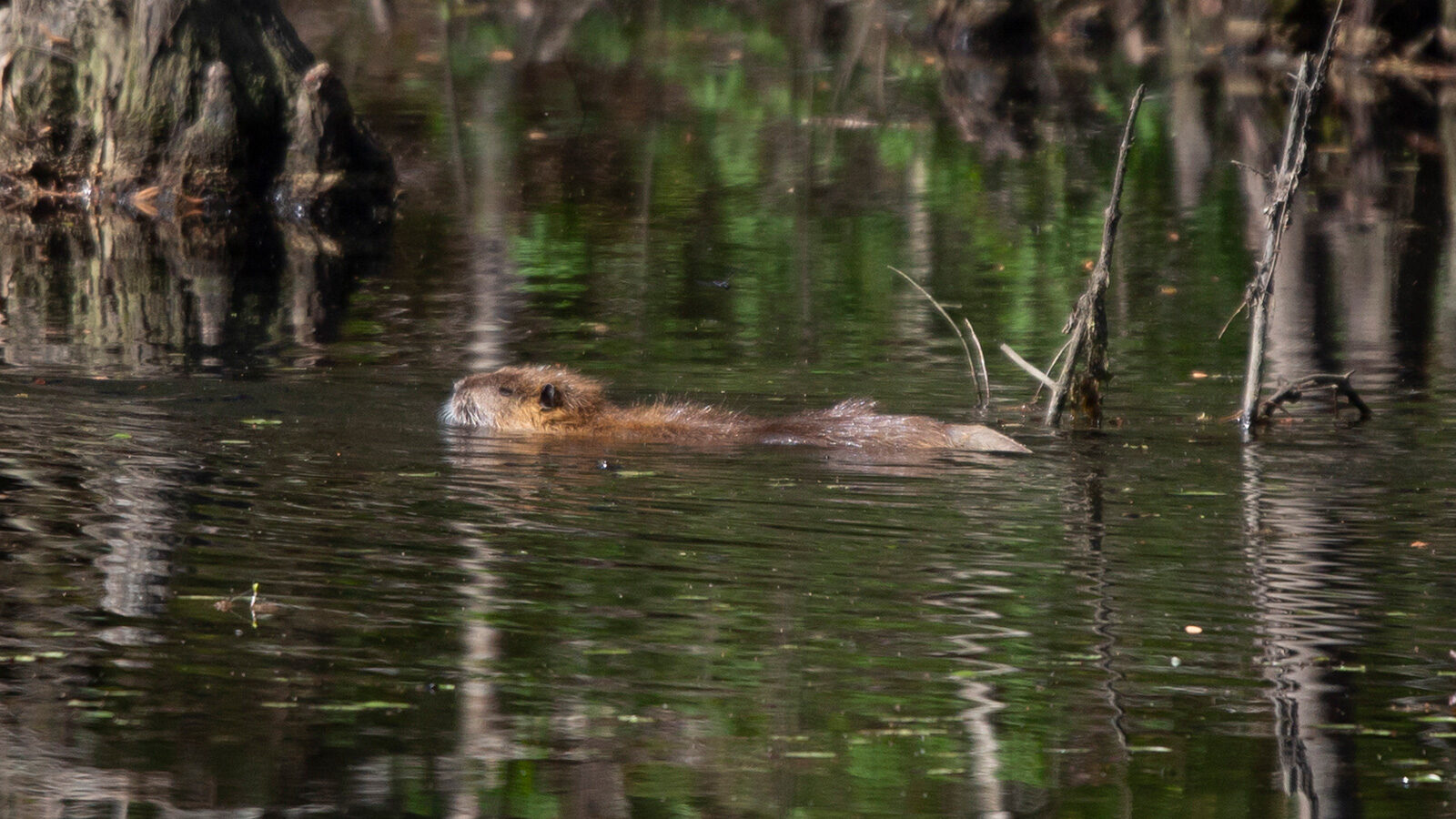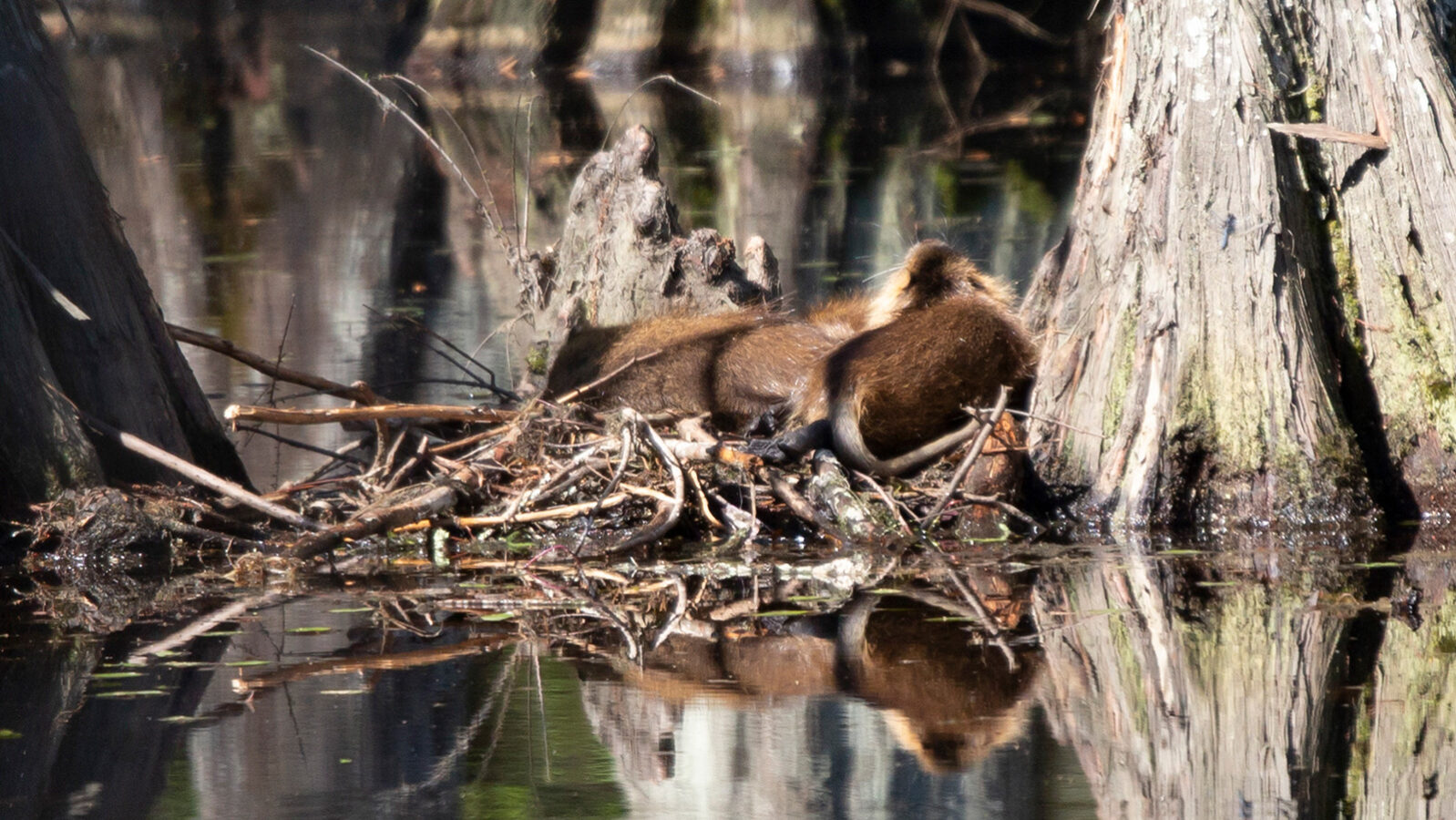
Did you know that nutria can stay underwater for five minutes?
Nutria
at
a Glance

Key Features:
Nutria are brown mammals with large, yellow or orange front teeth.
Least Concern - Population Decreasing
Habitat:
Bayous, canals, impoundments, lakes, ponds, rivers, and swamps
nesting habits:
Nutria mate any time of the year and give birth to two litters each year.
seasons nutria are active in our area:
All year
Diet:
Bulrush, cordgrass, roots, and rhizomes and tubers of cattails
hunting Behavior:
Nutria forage on land and in water.
Commonly Confused With:
Beavers and Muskrats

Nutria are often confused with beavers because both are brown, semiaquatic mammals. Nutria have rounder tails than beavers.

Nutria are often confused with muskrats because both are brown, semiaquatic mammals. Muskrats have long, flat tails.